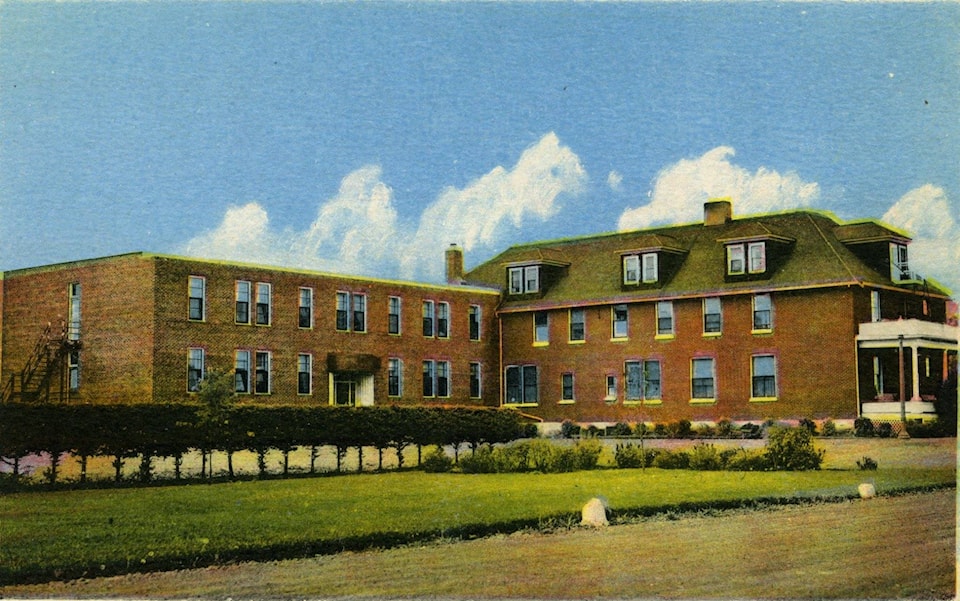In April 1904, Red Deer proudly opened the first hospital facility between Calgary and Edmonton. However, despite the tremendous community pride in the accomplishment, the non-profit corporation, which ran the hospital, continuously found itself in financial difficulties.
Various fees and charges were levied to meet operational costs. The government provided a grant of 50¢ per patient per day. There were additional revenues from a form of hospitalization insurance. The public made many generous donations.
Nevertheless, all the revenues, grants and donations were not enough. In the first decade of its existence, the Red Deer Memorial Hospital managed to attain a surplus only twice.
The situation turned critical during the First World War. A great deal of local fundraising was redirected to the war effort. The Memorial Hospital Corporation began to collapse. By the end of the war, there was only one paid-up member of the society left.
Consequently, in 1918, the memorial hospital board was formally dissolved. The City of Red Deer assumed full responsibility and appointed a three-person commission to operate the facility.
Unfortunately, while the new commission board raised patient fees and cut costs, the fiscal problems continued. Deficits and debts continued to soar. The problems were made much worse by the large numbers of veterans returning from overseas with severe injuries to their bodies and/or minds. Moreover, as the war ended, the worst pandemic in Alberta history struck. Several dozens in Red Deer and area passed away of the devastating disease.
The city and the hospital commission decided that the situation was not sustainable again. In 1921, a proposal was made to create a tax- supported municipal hospital district encompassing the City of Red Deer and surrounding rural municipalities such as the M.D.’s of Arthur, Penhold and Golden West.
Plans were made to have the new municipal hospital board take over the 40-bed memorial hospital and to bring it up to standard. Three additional eight-bed hospitals were to be constructed in Delburne, Eckville and Rocky Mountain House. The capital costs were to be covered by selling debentures.
Revenues for the new district were to come from government grants, patient fees, a farm tax of 3¢ per acre and a special 5-mill levy on the City of Red Deer and the villages in the district.
The scheme went to a public vote in August 1921. While the city and most surrounding rural areas voted in favour, there was enough opposition in more remote districts that the required 2/3 majority vote was not achieved.
The city took decisive action in the aftermath of the defeat. It was pointed out that only 14 per cent of the patients at the hospital were from Red Deer. City residents paid the same patient rates as non-residents, but also contributed $32,000 in city taxes towards the hospital every year. Rural municipalities owed thousands of dollars for care provided to their residents. Red Deer city council had severe financial problems of its own. Consequently, council refused to pay anything further.
The hospital quickly went bankrupt again. The provincial government was forced to step in. Ten beds were closed, staff were laid off and salaries were slashed by 40 per cent. The matron suffered not one, but two nervous breakdowns.
In the spring of 1923, a new municipal hospital district was created, this time limited to only the city. It was the first urban municipal hospital district in Alberta. The new hospital board could levy its own taxes. Patient fees were set at $1 per day for city residents Non-residents would have to pay $4 per day, plus other fees.
In December 1923, the rural areas were given another chance to join the new hospital district. However, once again the rural ratepayers voted down the scheme.
While there remained many problems for the Red Deer Municipal Hospital, the community now had some financial stability for its hospital care. Even in the Great Depression of the 1930’s, the hospital district stayed solvent. In 1948, the rural M.D. of Red Deer finally agreed to the enlargement of the hospital district to include surrounding rural areas.
Red Deer historian Michael Dawe’s column appears Wednesdays.
